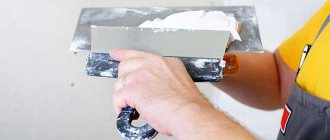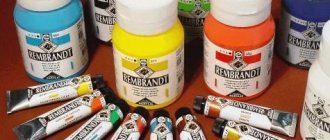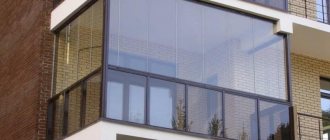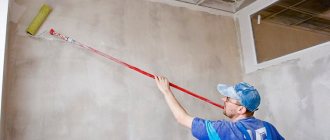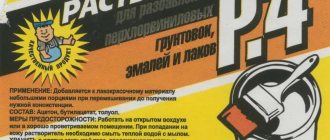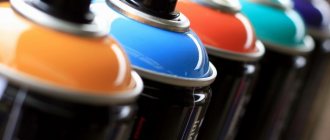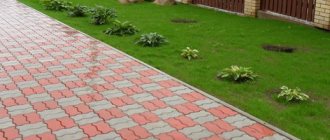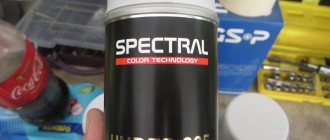In most cases, there is little difference between epoxy and polyester resin. These resins are completely interchangeable. To choose one of them, you need to consider the advantages and disadvantages of both.
Epoxy and polyester resins are thermosetting plastics. This means that once they become solid, they cannot be returned to a liquid state. In contrast, thermoplastic materials can be melted using heat.
Pros and cons of epoxy resin
Epoxy is produced mainly as a two-part product and contains synthetic substances.
The difference is that it has a basic composition and a hardener, which is added to it just before work begins.
After complete drying, you can get a very durable product that is not afraid of aggressive influence from the outside. But if solvent gets on the surface, it will be damaged.
Pros of using epoxy:
- Safe for human health after complete drying, no harmful fumes;
- Little shrinkage;
- Protects the surface from moisture penetration;
- Wear-resistant;
- Easy to sand;
- You can connect wooden parts and any non-porous ones;
- Has the most reliable seam.
You can work with epoxies for two hours, then the composition begins to harden. In order for it to dry completely, the temperature can be from -10 to +200, you can use various drying methods (cold or hot method).
There is a difference in these methods: if hot drying is used, then it is possible to obtain products with increased strength that can be used in production.
Here are the main areas where this resin is used:
- Fabric impregnation in aircraft manufacturing;
- Ship handling;
- In the manufacture of various parts in mechanical engineering;
- In the production of construction plastics;
- For waterproofing floors and walls where there is a high level of humidity;
- For external wall treatment;
- For decoration;
- To create a barrier against chemicals in industry.
There are also disadvantages, but they are few. The first is the high price. Especially compared to polyester resin.
And the second is the time for complete drying, it depends on the hardener and can be quite long. If you use high-quality hardeners, the cost of work will increase further.
conclusions
Based on all of the above, the following conclusions can be drawn:
- ES are used in shipbuilding and other works where the use of a reliable resin with good waterproofing properties is required. Durable parts are made from it. In particular, ES is used in rocket and aircraft manufacturing.
- PS are used for the manufacture of decorative items that are not subject to excessive stress. For example, it is actively used in auto tuning. Advantages of PS: ease of operation and low cost. Disadvantages: low strength and stability.
From a chemical point of view, ES and PS have nothing in common with each other. But their physical properties are very similar. Yes, and they are used in similar areas. However, the resins do not interact with each other in the liquid state. And if you apply one material to another, they will begin to delaminate - this must be taken into account.
Pros and cons of polyester
The main substance in the composition is polyester, and other components may vary. If you also buy a certain finishing coating for such a resin, then the quality and strength will be much better.
Areas where this mixture is used:
- Shipbuilding;
- Mechanical engineering;
- In construction;
- In the chemical industry;
- In the production of fiberglass, plumbing;
- In the production of artificial stone.
Positive aspects of resin:
- Low price;
- Not afraid of various chemicals, wear-resistant;
- Dielectric;
- Safe for human health after complete drying;
- Dries at normal temperature;
- It's easy to work with her.
What is the difference between epoxy and polyester? The first resin has much better physical and chemical properties.
To improve the properties of polyester resin, it is necessary to use a special coating: if the room is with low humidity, then it is an orthophthalic coating, and if the room is with high humidity, then it is a neopentyl coating.
A one-component composition can also be attributed to the disadvantages, because if the composition is old, then it will already be hard and it will be impossible to work with it.
But epoxy resin needs to be diluted, it is suitable for any surface, the shelf life is not so important.
There is one drawback - it is flammable, since the composition contains certain solvents, this mixture burns like wood.
Unlike epoxy, there are also disadvantages:
- Low level of adhesion;
- High degree of shrinkage;
- High water filtration.
Flaws
The disadvantages of polyester resins include the use of a flammable and toxic solvent such as styrene during the production process. Many manufacturers have stopped using it, so when purchasing resin, you need to pay attention to the composition.
Another disadvantage of the composition is the flammability of the resin. In its unmodified form, it burns like hardwood. To solve this problem, manufacturers introduce powder fillers with fluorine and chlorine or carry out chemical modification.
Other types of resins
There are many more types of products that can be used instead of the resins described above. They are not so well known, but are still used in industry.
Vinylester compounds
This is a new type of mixture, the principle of which is similar to the production of polyester resin.
They have good strength, which is due to certain molecules from the epoxy. And the shrinkage is average (more than that of epoxy resin, and less than that of polyester).
Other properties:
- Prevents microcracks from forming;
- Increases the level of adhesion to the base;
- Water resistant.
But such material is dangerous for humans due to the fact that it contains harmful elements. Modern versions of such material no longer contain them. Another negative aspect is poor adhesion at room temperature.
In terms of price, such resins are slightly less expensive than epoxy resins. During use, precautions must be taken because when working with various substrates, peeling of the outer part of the coating may occur.
The adhesion process is poor with carbon fiber, but good with fiberglass.
Bakelite mixture
It is a phenol and formaldehyde material where an alkaline catalyst is involved.
Such a product is created at the beginning of the production of a phenol-formaldehyde mixture. In appearance, this resin is similar to a viscous yellow liquid with a different shade (light or dark).
This product is used as a connecting element in the production of tools for processing metal by cold and hot pressing or rolling.
Bakelite is used in plastic production because it has the property of staying shaped and not melting when heated.
And alcohol-based versions are used as varnish.
Properties of this product:
- High level of resistance to shock and pressure;
- Low level of thermal conductivity;
- Easy to process on equipment;
- Good electrical insulation;
- Not afraid of chemicals;
- Withstands temperatures up to +300 degrees.
Epoxy vinyl ester products
Such resins are excellent at protecting surfaces from corrosion due to their high degree of resistance to chemicals.
They are very popular in industries where the anti-corrosion properties of fiberglass material are needed.
That is why such products are used in various areas of industry:
- Chemical industry;
- Energy industry;
- Pulp industry;
- Petrochemical industry;
- Production of medicines;
- Waste treatment.
When such resins are applied to objects, they are reliably protected from various solvents, alkalis, oxidizing agents, and so on. Some types of such mixtures can withstand temperatures up to +315, but they are mainly used at temperatures up to +175.
The service life is several decades, and the price of such material is average.
Isophthalic mixture
This material is the same polyester, only the process of its production is slightly different. This resin differs from ordinary polyester mass in its structure (molecular weight). Therefore, the properties of this material are slightly different.
The isophthalic mixture has a complex structure. Its main features:
- High level of strength and impact resistance;
- Bonds well to glass fibers;
- Withstands severe loads;
- Low level of water absorption;
- The manual method or spraying is suitable.
Orthophthalic drugs
Compared to isophthalic mixtures, these do not have such a complex structure.
The composition includes such materials that make a mixture with good environmental performance, the amount of evaporated harmful substances is minimal. And some were generally considered safe for humans.
Most resins contain paraffin. Such products are often used to create a top layer on laminate flooring. This material dries quickly, so the working time with it is very short.
Application area
Epoxy materials have unlimited possibilities for use. Traditionally they are used as:
- impregnating agent for glass fibers, fiberglass, gluing various surfaces;
- waterproofing coating of walls and floors, including swimming pools and basements;
- chemically resistant coatings for interior and exterior finishing of buildings;
- products that increase strength and water resistance for wood, concrete and other materials;
- raw materials for casting forms subjected to cutting and grinding in the production of fiberglass products in the electronics industry, construction, household, design work.
Exploitation
The next difference is that the finished coating made from these substances has high quality indicators and a good level of adhesion.
The shrinkage of the epoxy product is very small, its service life is long, it is used for the manufacture of parts in which wear resistance is important.
But to work with such resin, you need experience. Polyester is suitable where very high wear resistance is not needed, the service life is also long, and the parts are of good quality.
Nuances of choice
Polyester resins are supplied in a “started” polymerization reaction, that is, after a certain time they turn into a solid state. And if you purchase old resin, it will not have the declared properties and characteristics. Many manufacturers provide a guarantee of freshness for their products.
The shelf life of polyester resins is about six months. If you follow storage rules, for example, keep the composition in the refrigerator without freezing, you can use the resin throughout the year. Avoid exposure to direct sunlight and ambient temperatures above +20 degrees.
Safety precautions at work
Before working with polyester or epoxy, you must carefully read the instructions on the mixing method, precautions, and prepare the necessary respiratory and skin protection items. Failure to follow safety precautions when working with chemicals can cause burns and harm your health.
When mixing components, you should observe some small points:
- do not use dishes intended for food;
- prepare a mask, gloves, protective apron and goggles;
- if any of the components come into contact with the skin, immediately rinse under running water, treat with soap and alcohol, and apply cream;
- When connecting components, the window/balcony must be open.
Epoxy repair technology
Fiberglass is needed to strengthen a damaged area of the body or internal components of a car. If necessary, you can add substances to the epoxy that provide even greater reliability of the connection - aluminum or steel (in powder form), talc, sawdust. There are also plasticizers (oils and others) on sale that are added to epoxy to improve its properties. The plasticizer helps the resin not to peel and crack for a long time, which is why it is desirable for use.
Preparatory work
To prepare the product, clean it from any surface and deep contamination. Remove paint, corrosion, and dirt by wiping with solutions, washing, and sanding. Around the site of damage you need to treat the surface to 6 cm, no less. If you move the repair area a little inward, the overlay will hardly stand out from the main background. Before work, the area is degreased. If necessary, apply polish, anticorrosive or galvanizing. Then priming is done.
Installation of fiberglass overlays
First, a layer of epoxy diluted with a hardener is applied to the treated base. Next, the order of work will be as follows:
- apply the smallest piece of fiberglass, roll it with a roller to remove air;
- if air nevertheless penetrates under the material, the latter is carefully pierced;
- apply another layer of resin, layer the next medium-sized piece;
- if necessary, perform another intermediate layer or apply the largest “patch”, alternately wetting it with epoxy resin.
Pieces of fiberglass can be immediately impregnated with resin and applied to the intended place. The main thing is that each next layer overlaps the previous one by a few millimeters. After the resin has completely hardened, it is passed over the surface with a file, then it is sanded. The remaining holes can be covered with auto putty. For large holes, first place a hard patch - made of metal or plywood. This will help prevent damage to the fiberglass. The material is first lubricated with wax or paraffin so that it can be removed upon completion of the work.
Safety precautions
Do not allow epoxy to come into contact with the skin or eyes, which can cause allergies or toxic damage or inflammation. To do this, wear gloves and glasses. You need to work in a respirator, because small particles of fiberglass are also harmful to the respiratory system, as are resin fumes.
It is important to install a good hood in the room or thoroughly ventilate it through a window. If resin gets on the skin, wash it well with soap and apply a nourishing cream.
Compliance with such measures will help to do the work efficiently and safely for health.

